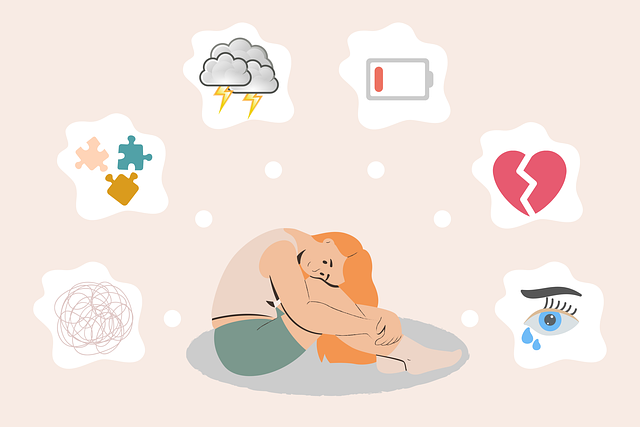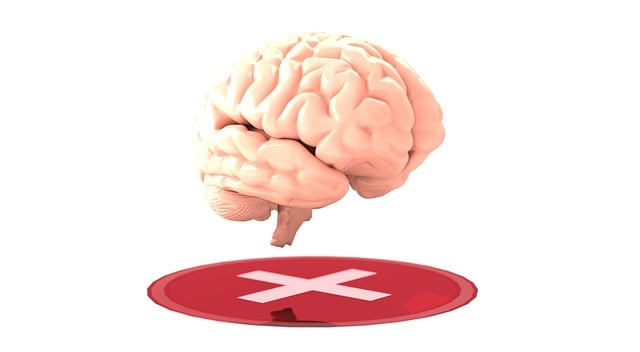Creating a successful marketing strategy for a mental wellness app focused on therapy for depression requires understanding diverse user needs and preferences. Tailoring messaging based on demographics, incorporating success stories, and emphasizing tangible benefits like improved mood regulation are key. Effective channels include social media and online communities, fostering open conversations about mental health. Engaging content, such as recovery narratives and interactive tools, attracts and retains users. Measuring success through metrics like user engagement, retention, and conversion demonstrates the app's impact on therapy for depression and overall mental wellness improvement.
In today’s digital age, mental wellness apps offer a promising avenue for reaching at-risk individuals struggling with depression. This article delves into a comprehensive marketing strategy development guide for therapy for depression apps. We explore crucial aspects such as understanding target audiences by identifying depression symptoms and their unique needs, crafting compelling messaging that highlights the benefits of therapy, and selecting effective channels to reach those in need. Additionally, we discuss content strategies featuring engaging stories, interactive features, and educational resources, while emphasizing key metrics for evaluating app marketing impact.
- Understanding Your Target Audience: Identifying Depression Symptoms and Needs
- Crafting Compelling Messaging: Communicating Therapy for Depression Benefits
- Channel Selection: Where to Reach At-Risk Individuals Effectively
- Content Strategy: Engaging Stories, Interactive Features, and Educational Resources
- Measuring Success: Key Metrics for Evaluating App Marketing Impact
Understanding Your Target Audience: Identifying Depression Symptoms and Needs

Understanding your target audience is a crucial step in developing an effective marketing strategy for mental wellness apps, especially when addressing common issues like depression. Depression symptoms can manifest differently in various demographics and individuals. Some may experience persistent sadness, while others might exhibit increased irritability or changes in appetite and sleep patterns. Recognizing these subtle signs and understanding the unique needs of those struggling with depression is essential. For instance, a young adult dealing with depression might be more inclined to seek online therapy for its convenience and accessibility, whereas an older individual may prefer group support or face-to-face counseling sessions.
Marketing efforts should aim to connect with these diverse groups by highlighting the benefits of early intervention and therapy for depression. Emphasizing the accessibility and effectiveness of digital tools in conjunction with traditional mental health services can be a powerful approach. By catering to specific needs, whether it’s improving self-esteem through therapeutic exercises or offering community outreach programs for support networks, your app can establish itself as a valuable resource in the mental wellness landscape.
Crafting Compelling Messaging: Communicating Therapy for Depression Benefits

In crafting compelling messaging for a mental wellness app focused on therapy for depression, it’s crucial to highlight the tangible benefits users can expect. Emphasize how regular sessions can lead to significant improvements in mood regulation, sleep patterns, and overall life satisfaction. Share success stories or testimonials from individuals who have found relief and regained control over their lives through the app’s guided therapy for depression. This emotional connection is vital to engaging potential users and fostering trust.
Additionally, integrate secondary keywords naturally into the narrative. For instance, discuss how the app’s mindfulness meditation features can serve as powerful tools for stress reduction and confidence boosting. Mention that effective risk management planning for mental health professionals is integrated, ensuring a safe and supportive environment for users’ mental wellness journeys. Balance informative content with a warm, inviting tone to encourage users to take the first step towards improving their mental health.
Channel Selection: Where to Reach At-Risk Individuals Effectively

Reaching at-risk individuals for mental wellness is a strategic endeavor that requires thoughtful channel selection. Social media platforms like Instagram and Facebook have become powerful tools to connect with audiences in need, especially younger demographics struggling with anxiety relief and depression. These platforms allow for targeted advertising based on user interests, location, and even emotional indicators, ensuring that marketing efforts for therapy services reach the right people.
Additionally, online communities and forums focused on mental health discussions can be goldmines for connecting with individuals seeking support. Engaging in these spaces subtly, perhaps through sharing valuable content around empathy building strategies or promoting mind over matter principles, can foster trust and encourage users to consider professional help when needed. Effective channel selection goes beyond just reaching at-risk individuals; it’s about establishing a supportive digital environment that encourages open conversations about mental wellness.
Content Strategy: Engaging Stories, Interactive Features, and Educational Resources

In the realm of mental wellness app marketing, a robust content strategy is key to engaging and supporting users on their journey towards emotional healing processes. Crafting compelling narratives around therapy for depression can humanize the experience, fostering connection and trust with potential users. Share relatable stories of individuals overcoming challenges, emphasizing the transformative power of mental wellness coaching programs development. Interactive features such as mood tracking, meditation guides, and community forums not only enhance user engagement but also provide valuable data for personalizing support.
Beyond therapeutic narratives, incorporating educational resources is a game-changer. Offer insights into various aspects of mental health, from understanding depression’s symptoms to exploring confidence-boosting techniques. These resources empower users with knowledge, encouraging them to take an active role in their wellness journey. By combining engaging stories, interactive tools, and educational content, the app can become a comprehensive guide, attracting and retaining users interested in therapy for depression and overall mental wellness improvement.
Measuring Success: Key Metrics for Evaluating App Marketing Impact

Measuring success is a critical aspect of any marketing strategy, especially in the mental wellness space where apps targeting issues like therapy for depression play a significant role. Key metrics to evaluate the impact of your app marketing efforts include user engagement, retention rates, and conversion to paid services (if applicable). Tracking daily active users and monthly active users provides insights into app stickiness, while tracking new downloads and user growth gives an understanding of reach and adoption.
For apps focused on self-esteem improvement or burnout prevention strategies for healthcare providers, metrics like completion rates of therapeutic modules, regular usage frequency, and user feedback can be invaluable. These indicators help in refining the app’s content and features to better cater to users’ needs, ensuring continuous engagement and positive mental wellness outcomes.
In developing a marketing strategy for mental wellness apps, focusing on therapy for depression is key. By understanding your target audience’s needs, crafting compelling messaging that highlights the benefits of such apps, and leveraging effective channels to reach at-risk individuals, you can create a powerful campaign. Implementing engaging content strategies, including interactive features and educational resources, ensures user retention and satisfaction. Finally, measuring success through key metrics allows for continuous improvement and impacts positive mental health outcomes in your target market.














